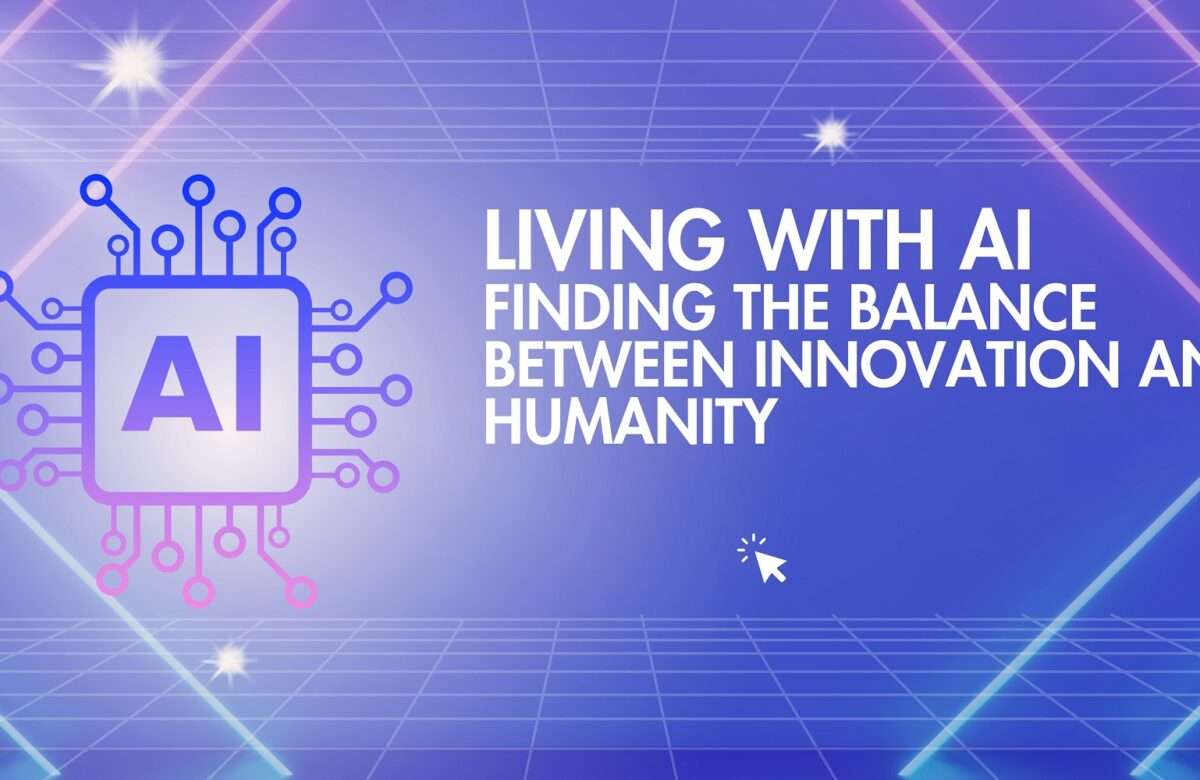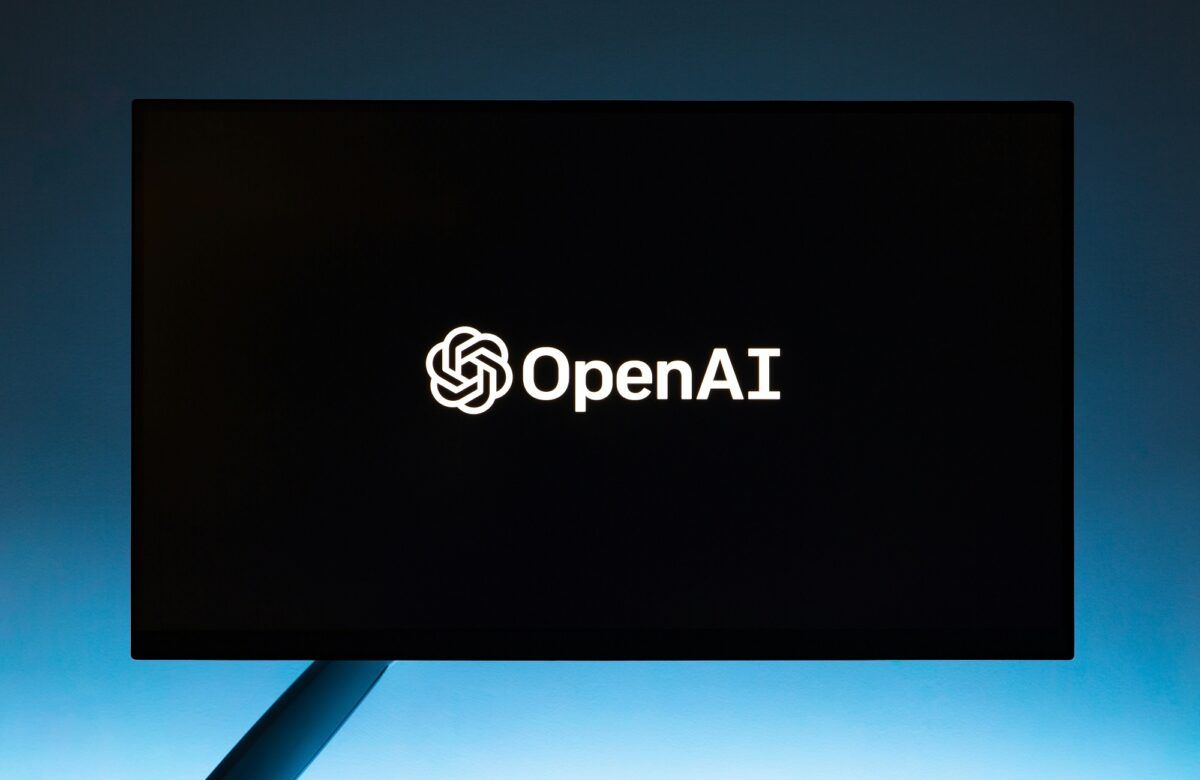- 30 December 2023
- No Comment
- 606
Artificial Intelligence 2023 Recap: Top Stories & 2024 Predictions

2023 was the year AI kicked into high gear, leaving us all in a state of exhilarating confusion. If you felt like AI gave you whiplash, you’re not alone. From the early excitement of testing ChatGPT in January to the rapid-fire releases of Bing chatbots and Google’s Bard, the tech landscape was on fire.
you whiplash, you’re not alone. From the early excitement of testing ChatGPT in January to the rapid-fire releases of Bing chatbots and Google’s Bard, the tech landscape was on fire.
In a blink, giants like Microsoft, Google, Meta, Amazon, and Nvidia jumped on the AI bandwagon, each unveiling their own arsenal of cutting-edge tools.
The tech industry became a battleground of innovation, and the air was thick with the buzz of AI advancements.
But the AI storm didn’t stop at tech’s doorstep. Healthcare, education, and media felt the impact too. Imagine the ripple effect as AI swiftly transformed these sectors, promising a future beyond our wildest expectations.
Hi, I’m Nabeel Shaikh, a seasoned chartered accountant and entrepreneur with 17 years of diversified experience. Before we dive into 2024, let’s hit the rewind button and relive the biggest AI stories of 2023.
January: Microsoft’s $10 Billion Bet
In a groundbreaking move, Microsoft declared a $10 billion alliance with OpenAI, setting the stage for a multi-year collaboration.
Microsoft’s commitment included not only the development of supercomputing systems but also the integration of OpenAI’s technology into Microsoft’s services.
From 266 Million to 616 Million Users
January witnessed the meteoric ascent of ChatGPT, captivating users worldwide. The user base skyrocketed from 266 million to a staggering 616 million, reflecting an unprecedented 131% month-over-month growth.
Decoding Lung Cancer Risks with Deep Learning
In a fusion of tech brilliance and healthcare impact, MIT researchers joined forces with Mass General Hospital. Together, they created a deep-learning model with the power to assess a patient’s risk of lung cancer by analyzing CT scans.
This breakthrough not only showcased the potential of AI in healthcare but also hinted at a future where early detection becomes a reality, thanks to the prowess of artificial intelligence.
February: Google vs. Microsoft in the AI Arena
February unfolded as a battleground for tech supremacy, with Google and Microsoft sprinting to unveil their AI-powered contenders. On February 6, Google fired the first shot with Bard, a conversational AI chatbot set to challenge the reigning ChatGPT.
However, the plot thickened as Microsoft geared up to drop its own bombshell just a day later: the AI-infused Bing.
The timing of Google’s Bard announcement raised eyebrows, with Microsoft’s AI-powered Bing waiting in the wings. The air was thick with suspicion as observers questioned the seemingly synchronized moves.
Google’s internal discord added fuel to the fire, as employees voiced concerns over the nature of Bard’s revelation. February became a pressure cooker for tech giants scrambling to counter ChatGPT’s dominance, resulting in a flurry of alternative AI creations.
March Madness: GPT-4 Unleashed Amidst AI Onslaught
March marked a pivotal moment in the AI timeline, with the release of GPT-4 causing ripples across the tech landscape. But GPT-4 wasn’t alone— it seemed like every company joined the AI race, unveiling a slew of cutting-edge tools that promised to redefine our digital experience.
Adobe’s Firefly Illuminates Creativity
Adobe introduced Firefly, a revolutionary AI tool designed for image generation and editing. Canva’s AI Brigade
Canva wasn’t far behind, introducing AI-powered virtual Design Assistants and Brand Managers.
The marriage of design and artificial intelligence promised a seamless creative process, empowering users to navigate the world of design with newfound efficiency and innovation.
Zoom’s Intelligent Leap
Zoom, a household name in virtual communication, announced Zoom IQ in a strategic move to stay ahead in the AI game. The integration of intelligence into virtual meetings signaled a new era for collaborative technologies, amplifying the capabilities of the ubiquitous platform.
Ford’s Drive into the Future
Ford accelerated its self-driving ambitions with Latitude AI. The automotive giant embraced artificial intelligence to propel the development of autonomous driving technology, hinting at a future where cars become intelligent companions on the road.
UBC’s AI Predicts Cancer Survival
In a healthcare breakthrough, UBC researchers unveiled an AI system designed to predict cancer patient survival rates by analyzing doctors’ notes.
April: AWS Enters the AI Arena
Amazon stepped into the AI arena with the unveiling of Bedrock. This revolutionary offering allowed AWS customers to construct applications atop generative AI models, customizing them with proprietary data.
The introduction of Bedrock signaled Amazon’s intent to empower developers, providing them with a robust platform to harness the potential of generative AI.
Chatbot Bonanza: Companies Joining the Conversation
April saw a surge in companies embracing the chatbot wave. Expedia rolled out its AI mobile chatbot, ushering in a new era of customer interaction. Binance, making waves in the crypto space, introduced an AI-powered Crypto chatbot, adding a layer of intelligence to financial transactions.
Meanwhile, Sberbank, Russia’s answer to ChatGPT, entered the scene, promising a unique linguistic experience.
TikTok’s AI Aesthetic: Generating Profile Photos
TikTok, the social media sensation, entered the AI fray with a tool allowing users to create AI-generated profile photos. While the promise of personalized avatars was alluring, some, like myself, found the results straying into the realm of the uncanny.
Samsung’s Data Dilemma
Samsung made headlines when sensitive data found its way into the hands of ChatGPT. This breach prompted businesses to reassess the usage of ChatGPT among their employees, setting off a wave of restrictions to safeguard sensitive information.
Samsung’s data leak served as a stark reminder of the challenges and responsibilities inherent in the uncharted territory of generative AI.
May: Bard Chatbot Goes Public
The curtain lifted on Bard as Google opened its conversational AI chatbot to the public. Users now had the opportunity to engage with Bard, marking a significant step in Google’s foray into the world of interactive AI.
The Search Generative Experience (SGE) Unveiled
Google didn’t stop at Bard; it introduced the Search Generative Experience (SGE) with limited access, signaling a seismic shift in how users would discover information on the platform
While not yet available to the general public, the promise of SGE loomed large, poised to redefine the landscape of search interaction and transform the user experience.
The ripple effect of SGE extended beyond the digital realm, with the future of SEO taking center stage as a critical factor in the evolving landscape of online information retrieval.
June: Apple’s Vision Pro and AI’s Anti-Aging Feat
June brought a momentary calm to the AI arena as the world geared up for beach season. Amidst the tranquility, two standout events marked the month, showcasing the diversity of AI applications.
Apple’s Vision Pro: Augmented Reality Unleashed
Apple took the spotlight with the launch of Vision Pro, an AI-powered augmented reality headset. This futuristic device promised a new dimension of visual experiences, blending the real and virtual worlds seamlessly.
Anti-Aging Breakthrough
In a groundbreaking fusion of healthcare and AI, researchers at The University of Edinburgh harnessed the power of AI algorithms to identify potent anti-aging drugs.
This milestone not only marked a triumph for longevity enthusiasts but also underscored AI’s role in revolutionizing healthcare.
July: Bing Chat Enterprise and Microsoft 365 Copilot
July saw Microsoft make strategic strides in the realm of enterprise AI, introducing innovations tailored to enhance communication and productivity within corporate landscapes.
Bing Chat Enterprise
Microsoft responded to the need for secure communication with the announcement of Bing Chat Enterprise. This version empowered users to harness the capabilities of Bing Chat without the looming concern of confidential data finding its way onto the open web.
A proactive move, especially in the aftermath of the Samsung scandal, emphasizing Microsoft’s commitment to ensuring the privacy and security of enterprise conversations.
Microsoft 365 Copilot
Microsoft introduced Microsoft 365 Copilot, positioning it as “Your AI assistant at work.” Priced at $30 per user per month, this offering grant users access to their corporate data through the power of generative AI.
Google’s August Symphony
August proved to be a crescendo of AI announcements from Google, marking a dynamic month where innovation and enterprise collided.
Duet AI for Workspace
In a synchronic response to Microsoft’s 365 Copilot, Google unveiled Duet AI for Workspace at Cloud Next ’23. Priced at $30 per user per month, this AI-powered tool took center stage, promising enhanced productivity, streamlined workflows, and more efficient meetings.
Vertex AI
Google didn’t stop at Duet AI; it bolstered its AI infrastructure with innovations in Vertex AI. This augmentation aimed to optimize the AI landscape, offering developers and businesses advanced capabilities to harness the power of artificial intelligence.
SynthID
In a move to combat the rising threat of deepfakes, Google introduced SynthID, a watermarking technology designed to identify AI-generated images.
This innovation served as a sentinel against the misuse of AI in creating deceptive visuals, providing a layer of protection against the growing concerns of misinformation and digital manipulation.
Meta’s September Spectacle: AI Stickers, Meta AI, and Ray-Ban Meta Smart Glasses
In a month that saw Meta steal the spotlight, September became a stage for groundbreaking announcements, blending AI, celebrities, and wearable technology.
AI Stickers and Celeb-Backed Chatbots
Meta took a leap into the realm of expressive communication with the rollout of AI stickers for chats and stories. The visual language of messaging evolved as users embraced dynamic stickers powered by artificial intelligence.
Meta AI: Beta Conversations with Celebrities and More
Meta AI, the conversational chatbot, emerged in beta, introducing users to a new era of interactive conversations. What made it even more intriguing?
The inclusion of 28 AI “characters,” featuring personalities like Kendall Jenner as “Billie,” Snoop Dogg as the “Dungeon Master,” and Tom Brady as “Bru.”
Ray-Ban Meta Smart Glasses
Meta extended its reach from digital conversations to the physical world with the introduction of Ray-Ban Meta Smart Glasses. These futuristic spectacles not only allowed users to livestream their experiences but also facilitated engagement with Meta AI through voice activation.
OpenAI Faces Copyright Suits
September brought literary tension as fiction writers, including Jodi Picoult, George R. R. Martin, and Jonathan Franzen, sued OpenAI for copyright infringement. The clash highlighted the intersection of creativity and artificial intelligence, raising questions about the role of AI in crafting narratives.
Writers Guild Strike Resolved
September concluded with the resolution of the Writers Guild of America strike, a saga involving the use of AI in scriptwriting. The strike’s focus on AI’s role in script creation and rewriting ended with the Writers Guild securing their desired outcome.
The episode underscored the ongoing debate about the boundaries of AI in the creative process and its impact on the world of storytelling.
October: Biden’s AI Directive
October marked a significant milestone in the relationship between government and artificial intelligence as U.S. President Joe Biden wielded his pen to sign an executive order on AI.
Biden’s 63-Page Decree
The order acknowledged the profound impact of AI on the labor market, the potential for algorithmic discrimination with repercussions on civil rights, and the looming threat of AI-related fraud.
This comprehensive approach highlighted the government’s commitment to understanding and navigating the complexities of the AI landscape.
OpenAI’s November Rollercoaster: CEO’s Departure, Rehire, and GPTs Unleashed
As the year drew to a close, OpenAI took the stage once again, captivating the tech world with a whirlwind of events, from CEO shuffles to groundbreaking releases.
Fired, Hired, and Rehired in a Week
Mid-November brought chaos to OpenAI as co-founder Sam Altman found himself abruptly ousted from the CEO role. The plot thickened as Microsoft swooped in, hiring Altman to lead their new AI research unit. Just when the dust seemed to settle, Altman was rehired as OpenAI’s CEO, accompanied by a revamped board of directors.
OpenAI’s Customization Revolution
Amidst the leadership drama, OpenAI unleashed a game-changing feature in early November—custom versions of ChatGPT called GPTs. This innovation empowered users to create their own personalized GPTs tailored for internal use within their companies.
The scope extended beyond mere conversation, allowing users to design stickers, craft personal fitness routines, and explore a myriad of creative possibilities.
Elon Musk’s Grok
In the midst of November, Elon Musk stepped into the AI arena with Grok, a ChatGPT rival destined to be a feature for X Premium+ subscribers.
Musk touted Grok’s unique selling point: real-time access to information via the X platform. This announcement added a new player to the AI conversation, with Musk once again at the forefront of technological innovation.
Humane’s AI Pin
November witnessed the launch of Humane’s AI Pin, heralded as the first AI wearable device. Described as “Imagine Siri without a smartphone,” this innovative gadget opened new possibilities for hands-free AI interaction.
December’s Whispers: A Calm Before the AI Storm?
As December unfolded, the AI landscape seemed to take a collective breath, offering a moment of respite after a tumultuous year. Yet, even in the quiet, a notable event emerged.
Google’s Gemini: A Challenger to GPT-4
Google stepped into the arena with Gemini, a multimodal AI model designed to rival OpenAI’s GPT-4. In a surprising turn of events, Gemini outshone GPT-4 in benchmarks set by AI researchers, sparking conversations about the evolving landscape of AI capabilities.
2024: Artificial Intelligence Predictions
As we bid farewell to 2023, the tech world eagerly turns its gaze toward 2024, anticipating the next wave of AI innovations. While the future remains uncertain, a few predictions emerge on the horizon:
Evolution of Bigger and Multimodal Models
AI models will transcend their current capabilities, embracing multimodality to process and generate diverse data types.
These advanced models will unlock novel possibilities, including the creation of realistic deepfakes, synthesis of speech and music, and content generation in response to various prompts.
Challenges will emerge, demanding a delicate balance between reliability, fairness, security, and the management of computational and environmental costs.
Chief AI Officer
The surge in the strategic importance of artificial intelligence for Fortune 500 companies has sparked a trend that is expected to gain momentum in the coming year: the creation of a new C-suite position—Chief AI Officer.
President Biden’s executive order mandates every federal government agency to appoint a Chief AI Officer. This implies the hiring of over 400 new Chief AI Officers across the U.S. government in the coming months.
Investments by Cloud Providers
The surge in strategic investments by cloud providers into AI startups has not gone unnoticed, with notable players such as Microsoft, Amazon, Alphabet, and Nvidia injecting substantial capital into the AI ecosystem.
Microsoft’s $10 billion investment in OpenAI, Amazon’s $4 billion commitment to Anthropic, Alphabet’s $2 billion investment in Anthropic, and Nvidia’s extensive funding endeavors in various AI startups have contributed to a significant flow of capital within the industry.
However, this influx of investment is poised to face heightened scrutiny from regulators in 2024, particularly in terms of its accounting implications.
Rise of Real-Time Diffusion Applications
AI models that can shape opinions and spread information in real-time are expected to get more advanced and widespread. These applications will be used in marketing, education, entertainment, and social media.
However, there are worries about the potential for spreading misinformation, manipulating emotions, and eroding trust as these AI capabilities become more common.
Democratization through Open-Source AI
AI accessibility and inclusivity are set to thrive as open-source platforms, tools, and resources become more prevalent for widespread use and contribution.
A survey by Gartner in the first quarter of 2023 found that 70% of organizations were just looking into GenAI, and only 4% had actually started using it.
However, by the third quarter of 2023, 45% were testing or experimenting with GenAI, and an additional 10% had started using it for real.
This shows that more companies are quickly investing in AI, and the adoption and use of GenAI are picking up speed.
Strengthened AI Regulation and Governance
Expect a notable increase in AI regulation and governance at national, regional, and global levels. The focus will be on addressing social, legal, and ethical concerns like privacy, accountability, transparency, and human rights.
Balancing innovation with regulation, harmonizing diverse perspectives, and ensuring compliance and oversight will be essential challenges in navigating this evolving landscape.
From the rise of multimodal models and real-time diffusion applications to the democratization of AI through open-source initiatives, the year has been marked by unprecedented strides.
However, with these advancements come challenges—be it the accounting implications of strategic investments, the potential for misuse in influencing opinions, or the imminent scrutiny of AI governance.
The appointment of Chief AI Officers signals a strategic response to the growing impact of AI on corporate strategies, mirroring a trend witnessed during the era of cloud computing
As we stand on the cusp of 2024, the road ahead is both exciting and uncertain. The interplay of technological evolution, regulatory dynamics, and ethical considerations will shape the narrative of AI’s future.
Let us embark on the coming year with a sense of curiosity, resilience, and a commitment to navigating the uncharted territories of artificial intelligence.




